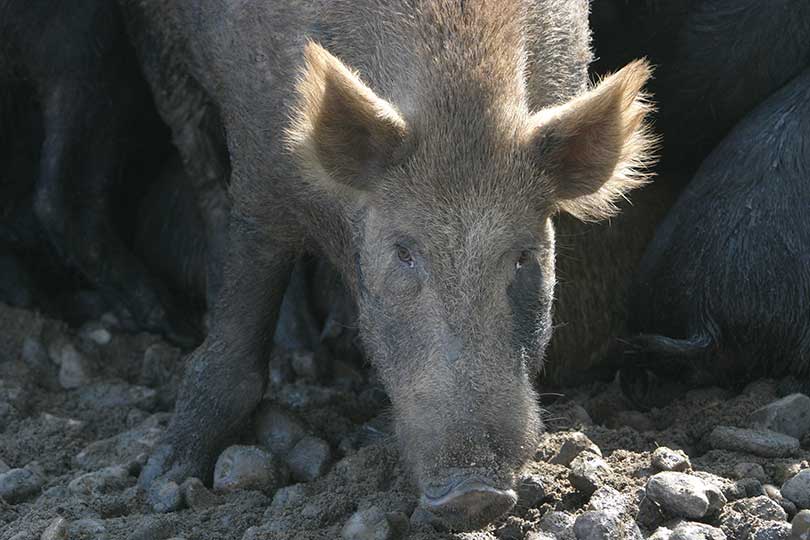Texas landowners are seeing more wild pigs this time of year with abundant food sources and the peak of farrowing season producing more animals across the landscape. That, unfortunately, means more damage to pastures and crops for farmers and ranchers.
Officials encourage landowners to monitor for signs of wild pig activity, such as tracks, rubs against fence posts and trees, well-used trails and hair stuck on barbed-wire fences where they cross.
Dr. Billy Higginbotham, wildlife specialist with the Texas A&M AgriLife Extension Service in Overton, said there are four legal ways to address wild hogs in Texas–trapping, snaring, shooting and catch dogs.
A potential new tool, a toxicant, could be available to Texas landowners in less than three years.
“There’s some excellent research being done on the use of a toxicant, sodium nitrite. That product is already legal in the country of Australia, and the U.S. Environmental Protection Agency is requiring tests on toxicology be run on that product,” Higginbotham told the Texas Farm Bureau (TFB) Radio Network. “We expect to have that toxicant in the hands of landowners as an additional tool, hopefully no later than 2019.”
Hiring professional shooters to reduce wild pig numbers from helicopters represents a cost-effective way right now for farmers and ranchers in parts of the state with less tree canopy, but in East Texas, trapping is advised, Higginbotham said. Corral-type traps work best, especially when a landowner can catch an entire sounder of pigs, he said.
But Higginbotham said it takes a process to trap effectively. Pigs must be “hooked” on the bait before placement of the trap, he said. The trap should then be baited to allow the pigs to get comfortable.
A recent AgriLife Extension survey indicated 71 percent of landowners with pastureland reported damages by wild pigs.

